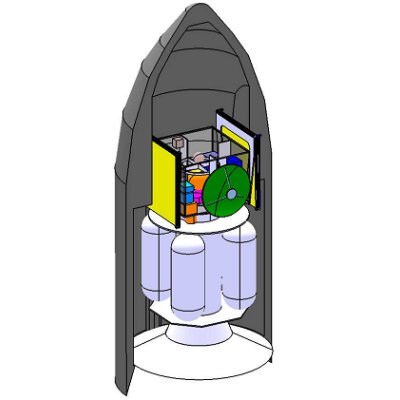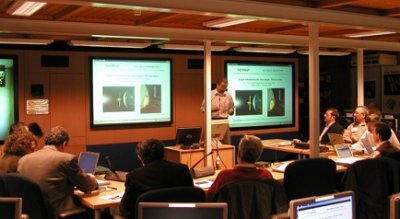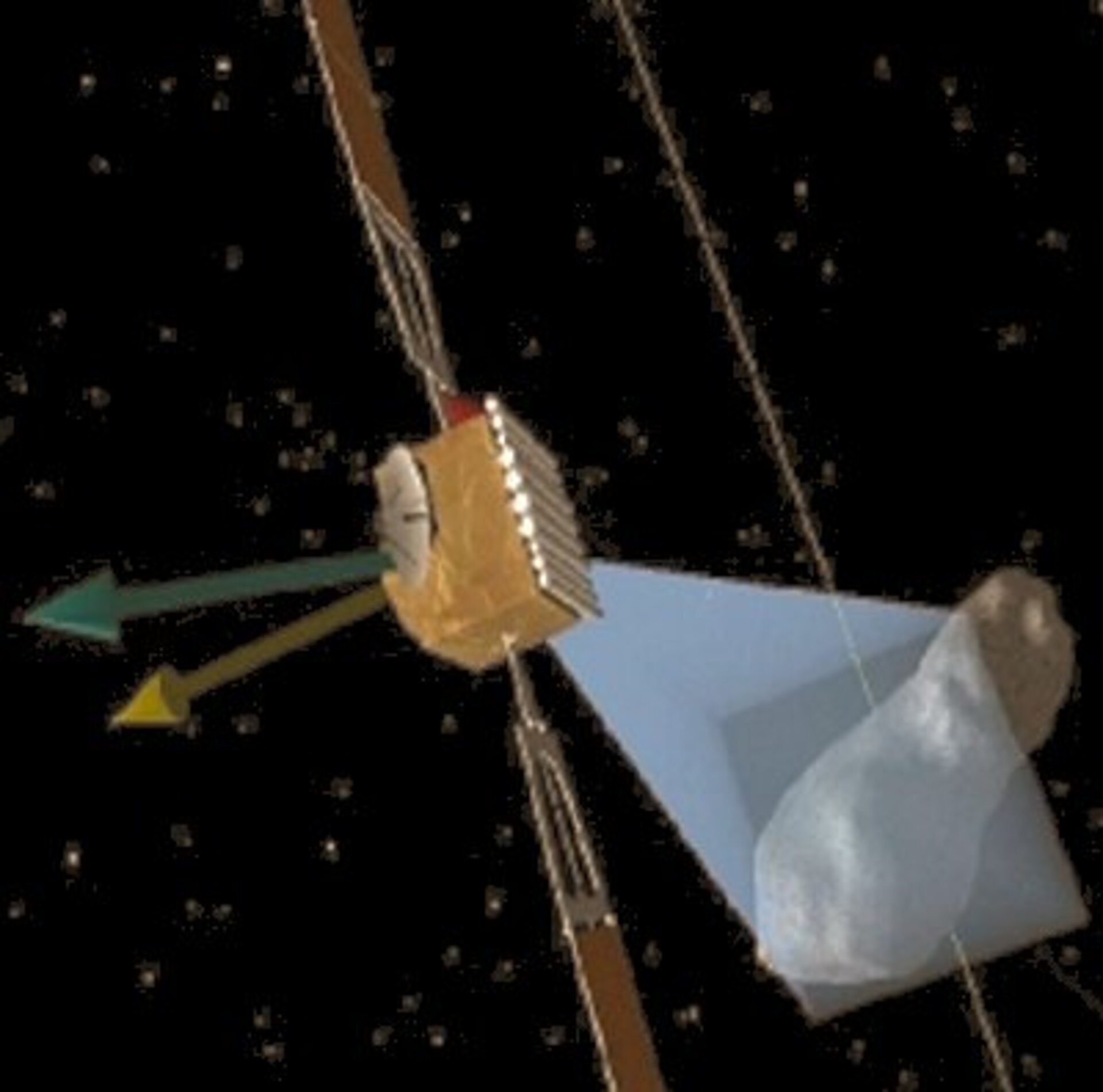RECENT STUDIES - NEO:
Keeping asteroids in check
On 8 February 2005, the Near-Earth Object Mission Advisory Panel (NEOMAP) team, chaired by Prof. Alan Harris, attended the CDF final presentation of the NEO study together with other specialists from all over Europe.
The NEOMAP team is composed of six European scientists in charge of advising ESA on the most effective ways to use space missions to understand the physical nature of asteroids, the assessment of a possible impact hazard and the viable ways of interacting with NEOs to eventually mitigate threatening conditions.
In July 2004, NEOMAP had delivered its final recommendation report containing a revision of the scientific rationale for the six missions studied in the framework of the international initiatives funded by ESA. The Advisory Panel also stated the principal criteria for space mission prioritisation, selecting the 'Don Quijote' mission, proposed by the Spanish company Deimos, as the most favourable.
Following this milestone in the NEO research activity, ESA started a pre-phase A study with the initial aim of revising Deimos’s proposal and to assess the feasibility of possible scenarios of interest for the scientific community. The study was conducted by the ESA CDF on request of the Advanced Concepts Team, between December 2004 and February 2005 in eleven concurrent design sessions. The CDF team of engineers independently evaluated the feasibility and examined the results of the Deimos proposal and then broadened the field of view exploring the space of possible alternative mission options.

The high-level objectives and aims of the mission were the demonstration of the possibility of influencing the trajectory of an asteroid by means of a hypervelocity impact and the ability of interacting with the surface of the very low gravity object. The proposed mission baseline is targeted to a 500-m diameter asteroid and consists of two different spacecraft. The first one, called the Impactor, has the task of autonomously finding, tracking and hitting the asteroid while travelling at a relative speed of more than 10 km/s. The second spacecraft, the Orbiter, is in charge of observing and measuring the consequences of the impact and conducting an intense scientific campaign of observations before and after the impact from its orbit around the asteroid. A seismology experiment based on deployable penetrators and seismic sources has also been included in the mission to prove the feasibility of anchoring devices onto the NEO surface, as well as gaining insight in its internal structure.
The Japanese scientists and engineers of JAXA joined the CDF study through a videoconference and provided their experience with the current 'Muses-C' mission and expressing their interest in cooperating in future NEO missions.
ESA and JAXA specialists shared their expertise in the CDF concurrent environment exploring the viability of nano-rover deployment, collection of samples and actively interacting in the assessment of the seismology payload.

ESOC mission analysts studied different target scenarios and several mission options. During the final presentation a satisfactory and comprehensive baseline was presented in detail.
The CDF NEO study has provided a feasible and complete mission to investigate NEOs' physical properties and internal characteristics, as well as to test the feasibility of altering an asteroid trajectory and anchoring devices to its surface.
The NEOMAP team was interested by this input and in future will help ESA in formalising a definitive mission development plan for the first European mission to a Near-Earth Object.




